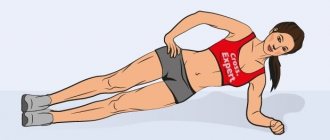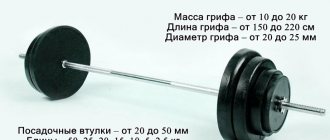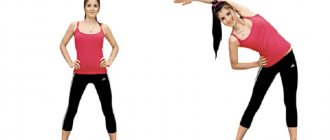Greetings
A variety of running workouts, such as shuttle running, are used to increase endurance, muscle mass, and acceleration. Shuttle running training is used in CrossFit and TRP training, as well as training athletes, runners, cyclists, soccer players and skiers.
You ask why run as a shuttle if there are interval runs and jogging. Let us explain: these are different types of load.
Here's what happens when a runner moves:
- You start like a sprinter, developing maximum speed in the first seconds. And now, as soon as you have developed this speed, you run to the turning point. We must try to turn around without slowing down. But inertia will not allow you to do this, believe me.
- Usually at the turning point you need to touch the floor or some kind of flag, or move an object. In this case, all this is called shuttle running with the transfer of 2-3 objects. You realize that in this case it is impossible to maintain speed because you need to stop, change direction 180 degrees and accelerate again.
- And so, you change the speed, accelerate, and again at the starting point you need to slow down.
So you are like a shuttle running back and forth. This is a complex load that develops coordination, speed, sense of balance and mobility of the body muscles. All this is necessary for any ball game, hockey, or martial arts.
Because the intensity of this type of running is high, you need to warm up well before training. Otherwise, you risk injury.
What does shuttle running give you?
Due to its effectiveness, shuttle running is widely used in various sports: in all types of athletics, crossfit, fitness, for training martial arts and athletes, winter and team sports, even for warm-up swimmers.
The use of shuttle running promotes:
- Increased muscle mass and explosive leg strength.
- Strengthen the work of the heart and respiratory system.
- Increase overall body endurance.
- Development of coordination.
- The ability to control the process and correctly develop the ability to distribute forces.
The practical benefits of this type of training are also the comprehensive physical development of the athlete and the average person, overall improvement of health and the ability to quickly improve physical fitness during the recovery period from injuries. It was also noted that regular shuttle flights promote rapid weight loss.
What qualities does shuttle running train?
Shuttle running is a suitable way to develop physical abilities. Develops qualities such as coordination, balance, speed, reaction, and also tightens all muscle groups, increasing their strength.
If you are preparing for a competition, working out before training, or just want to develop your physical abilities, this type of running will also be an ideal tool for toning your body.
Football players, hockey players, and basketball players often start their warm-up this way to bring themselves into the required concentration. Without reaction skill, which is especially important in races with sudden changes in trajectories, it is impossible to achieve results. Shuttle running ideally copes with the task of diversifying amateur training.
To get in shape in a short time, it is enough to do “shuttle training” once a day. If regular running has a cumulative effect, then everything is being done correctly. With this type of running, the body will definitely not allow itself to relax and will return to its usual tone.
Benefits and harms
One of the main benefits of shuttle racing is its ability to work all muscle groups. With regular training, the athlete's speed and strength increase significantly, and his coordination improves. He becomes more mobile, learns to quickly think through his movements a few seconds in advance. Undoubtedly, this contributes to progress in other sports (football, basketball, volleyball) and in fitness (strength training, crossfit).
Like all types of running, the shuttle technique allows you to improve the cardiorespiratory functions of the body, that is, it has a positive effect on the functioning of the heart and respiratory system.
The functionality of the heart muscle increases, the rhythm normalizes, which, in turn, helps improve blood circulation and vascular condition. The vascular walls are strengthened, their elasticity is increased, and cholesterol plaques are destroyed. All this means improving blood flow and tissue nutrition, eliminating stagnation in blood vessels, reducing the risk of developing diseases such as heart attack, atherosclerosis and stroke.
There is evidence of normalization and stabilization of blood pressure, as well as a decrease in glucose levels in patients with diabetes mellitus. However, each case is individual.
However, shuttle running is a type of sprinting that is only recommended for healthy people.
During training, lung capacity increases significantly (and quite quickly). This helps develop endurance and strengthen the immune system. The airways are cleared, oxygen saturation of the blood increases.
High-intensity training is a great way to lose weight quickly. With regular exercise, the percentage of subcutaneous fat quickly decreases. In addition, the body becomes more elastic and prominent. Running has a positive effect on muscle tissue, making it leaner and more pronounced. As already mentioned, all muscle groups receive a load, but more than others - the muscles of the legs, thighs, muscles of the sole and lower leg, and partly the buttocks (gluteus maximus).
Improving blood circulation in the pelvic organs reduces the risk of developing inflammatory processes in the genitourinary system, increases libido and reproductive functions.
Like any physical activity, shuttle running provokes the release of a large amount of endorphins, joy hormones, into the blood. This explains the improved mood, unreasonable joy and even decreased pain after exercise. In men, shuttle running increases the production of the main hormone for their body - testosterone.
Despite many beneficial properties, shuttle running is recommended only for healthy people, since it works almost within the limits of human capabilities (it is not for nothing that it is called a type of sprint).
This type of exercise should be avoided if you have existing heart diseases or diseases of the respiratory system (heart defects, heart attacks and strokes, acute heart and pulmonary failure, arrhythmia, tachycardia).
This technique places a serious strain on the joints and ligaments, so it is contraindicated for diseases of the musculoskeletal system, diseases of the extremities of a degenerative nature, problems with ligaments and joints. As a rule, the spine and ligaments of older people are already exhausted, so intense running will only worsen the situation. Elderly athletes are better off choosing a different type of exercise.
Absolute contraindications to training are tumors (including benign ones), injuries, inflammation, fever, severe hypertension, bleeding, and recent operations. In case of exacerbation of chronic diseases, infectious or colds, training should be postponed until complete recovery.
Common mistakes
Errors during shuttle running can be divided into two groups - during training, and also when passing the GTO standards.
When athletes pass the GTO standards, the following difficulties are possible:
- false start;
- not crossing or touching the line during a turn;
- intentionally or unknowingly interfering with other athletes.
It’s also quite common for beginners to make mistakes when they start training. According to statistics, these mistakes are the same for all athletes; they are the ones that prevent them from achieving high results.
- The load is not distributed correctly. The essence of this discipline is that the runner overcomes several identical segments and often by the end of the first half of the distance, endurance sharply decreases. Coaches recommend correctly distributing the load and starting running at an average pace. This will leave the athlete with enough strength for an explosive finish.
- Too much load. The coach’s task is to select loads that are adequate for the athlete’s physical condition. It is important to take into account human health and concomitant diseases. It is important that the training process brings benefits and not harm.
- Not braking fast enough before turning. This element is of particular importance if you want to achieve high results. Everything needs to be done in one movement - sharply turn the foot at an angle of 90 degrees, so turning the body is much easier, since the person stops, but maintains the inertia of movement.
- The runner does not follow proper breathing technique. We are talking about the frequency and periodicity of inhalations and exhalations. It is recommended to inhale for two steps and exhale for two steps. You need to breathe only through your nose and not through your mouth.
- No warm-up. Many athletes are in a hurry to start training and ignore the warm-up or perform the exercises poorly. As a result, injuries occur.
Types of shuttle running
Shuttle running is divided into many types and distances, but there are 3 main ones:
- Shuttle run 3x10. The athlete runs a distance of 10 meters three times. Part of the GTO complex, he taught in schools from the 1st grade.
- Shuttle run 4x9. The athlete runs a distance of 9 meters 4 times. It is taught to children in schools from the 5th grade.
- Shuttle run 10x10. An athlete runs a distance of 10 meters 10 times. Used to train and test the physical fitness of military personnel, rescuers and firefighters.
You can conduct shuttle running training and competitions all year round in the gym, or outdoors in the summer season.
How to learn shuttle running
Remember the most important thing:
- In the first seconds you need to accelerate to the limit;
- Before the turning point, move the center of gravity back, group;
- Slow down, fulfill the conditions (touch, transfer), turn around;
- Run away again.
If you don’t know how to train 10x10 shuttle running, devote classes to developing coordination, balance, and gross motor skills. Learn to correctly shift the center of gravity of your body. A great way to improve these skills is by playing basketball, hockey, or martial arts.
Conditions for shuttle running
High speeds, sharp turns, high inertia when performing elements, maximum speeds at the finish line entail a number of requirements for the meeting conditions:
- The surface of the training area should be dry to ensure maximum grip on the feet and avoid injury; Conducting such activities in the rain or on ice is strictly prohibited
- The start and finish lines must be located in an area where there are no obstacles or obstructions, as at high speeds the runner may fail to stay on the corner and become injured.
- Choose non-slip shoes
- Carefully lace your shoes, secure the ends of the laces
- Clothes should be light, not restrictive, but not too loose.
Shuttle technique
The shuttle running technique involves the following basic provisions and stages.
Start
Starting position – stand, one leg forward, the center of gravity of the body on it. One arm is pulled back and ready to help at the start, moving the body weight even further forward.
When the start command sounds, the body leans even further forward, the pushing leg does its job, and the other one prepares to quickly take over the baton. Some people recommend running on your toes for greater speed. Start in the way that is most convenient for you. The main thing is that the speed is good.
That's it, you've started. Objective number one is to gain maximum speed in the first 2 seconds.
Point B
Running to point B is a simple matter. But what to do when you reach it? How to continue running? You need to start moving the center of gravity of your body back at such a distance from point B that your speed decreases to the speed needed for a turn at this point, and not earlier or later. In the first case, you risk losing time, and in the second, you run further than the desired point.
If you run backwards, everything is easier. You slow down, going around point B, and run back. If you need to turn around, you lean towards the turn like a motorcyclist so that the inertia does not carry you somewhere.
At point A you do the same thing as at B.
If you need to lift an object, you can use emergency braking while grabbing the object. But this means that your speed will go to zero and you will have to accelerate again. At this stage, you can seriously lose valuable seconds. After all, shuttle running is a sprint type of competition.
Thus, running technique decides a lot.
Shuttle running technique
To get the maximum positive effect from training, you must follow the correct running technique. After all, not only the speed of completing a distance can influence the final result, it is also important to efficiently overcome obstacles in the form of sharp turns.
Many coaches, to begin with, recommend working out your running technique at low speeds, so that you can then increase the pace. Thus, the athlete will develop a system for completing the distance, and, ultimately, save a couple of precious seconds. For high-quality shuttle running, you must know three main points:
- how to start correctly;
- how to run competently;
- how to finish quickly.
- Start
Since the distance is less than 100 meters, the use of starting blocks is not necessary. Each athlete independently determines the position at the start; for some it is more convenient to move from a low starting position, and for others from a high one. In addition, you can choose a starting position based on the floor. This could be asphalt, a treadmill or a lawn.
To begin with, it is important to decide on the running leg, from which the correct starting position will be calculated. To more accurately determine the pushing leg, many coaches use a simple method. While the athlete is in a relaxed state and does not suspect anything, they lightly push him in the back and see which leg he falls on first. In this way, you can easily learn about the athlete's leg kick.
The body position at the beginning should be similar to what a professional figure skater looks like. The supporting leg is rotated 30 degrees and stands on the starting line, being in the most tense state, the free leg is located on the back of the toe. The back is flat, the lower back is not tense, it is in a static position, the body is slightly forward.
As soon as the start signal sounds, you need to sharply push off your supporting leg and throw your body forward by inertia. At this point, it is important to push with your entire body and lift your body up while maintaining the jerk. For a professional athlete, it is important to work out the starting technique well, since the speed of the entire run will depend on this.
- Distance running
To achieve maximum speed, you need to run the distance on your toes, thereby saving the time it takes to push with your whole leg. In addition, the right solution would be to increase the number of steps: the more often an athlete runs, the higher his speed. To work on this function, you can use a rope and perform jumping exercises with maximum frequency.
Mastering the shuttle running technique is impossible without a thorough study of the stopping step. This is necessary for the correct turn at the end point of each distance segment. The faster and more precise this step is, the more abruptly the movement will change, which means less time will be wasted. Team games such as volleyball, soccer or hockey can be used to develop proper stop step technique.
- Finish
For beginner athletes, it is recommended to choose a fast finishing technique at maximum speed. More experienced runners usually have a spectacular finish with their chest and shoulder girdles, which can give you the lead in the final meters of the race.
However, this method is dangerous because if performed incorrectly, serious injuries can occur. Therefore, if coordination is still not sufficiently developed, you should pay attention to the first finishing method.
Technique for overcoming segments in shuttle running
Shuttle running can be performed in the gym, on the street, on the lawn, asphalt or sand. The low or high start position does not matter. There are no starting blocks because the distance is short.
Correct starting technique:
- The arms are bent at the elbow joints, as when running short distances
- The torso is slightly tilted forward to transfer the body weight to the supporting leg (front)
- The swing leg (back leg) is located half a meter from the supporting leg. You can get closer or further, but you can’t take a lunge-like position
- Toes turned slightly inward
The determining factor in this discipline is the ability to quickly gain speed.
Shuttle running training
To develop results in this sport, there is no need to train from morning to evening, day and night. It is enough to devote part of the lesson to the implementation of several approaches.
| First day | Perform 3 sets of 4x9 (four nine-meter segments). Try to keep it to 10 seconds each set. |
| Second day | Run 5 sets of 4x9. Still try to keep it to 10 seconds. |
| The third day | Increase the length of the segment to 15 meters. Perform 3 sets of 4x15. |
| Fourth day | Run 4 segments of 15 meters for 5 sets. |
| Fifth day | Increase the length of the segment to 20 meters. Perform 3 sets. Control your equipment and your well-being. |
Shuttle running is a serious strain on the body. Therefore, do not underestimate the effect of such training. Quick starts, turns, sudden changes in direction of movement perform almost all the main functions of the body.
Having a high level of physical fitness is not required. Even a novice can participate in the shuttle if he promises to take control of his well-being.
How to run a shuttle run quickly?
In order to improve your running performance, you need to warm up correctly and regularly. The body must receive regular loads, which will increase over time. Experts advise exercising every other day. To make shuttle running for endurance more effective, it is recommended to perform the following exercises:
- Run in place with your legs raised high. Do 2-3 approaches with decreasing and increasing speed.
- Lie on your back, raise your legs and do the movements as if you were running. Go as fast as possible first and then reduce your speed. The number of approaches is maintained.
- For those who are interested in how to shuttle run faster, it is recommended to also jog. You need to move by taking small and quick steps. Run 3-5 times for 50-100 m.
Examples of training using shuttle running
Shuttle running can be done both independently and as part of a comprehensive workout. With its help, you can diversify your program and increase the efficiency of your loads. Below are workouts for athletes of different skill levels.
- 200 meter run, 10 push-ups, 3x20 shuttle. Only 3 cycles.
- Push-ups - 30 times, 20 squats, jumping rope - 60 seconds, shuttle run - 5x10. Three cycles
- Pull-ups - 30 reps, push-ups - 10 reps, 40 push-ups, shuttle run 20x4. 2 cycles
At the same time, exercises can be supplemented by carrying objects while running the shuttle.
CrossFit complexes with shuttle running
If you get bored with the training process, try performing several functional complexes from the table below. This will bring something new to your program and diversify the entire learning process.
The complexes are designed for fairly experienced athletes with good strength endurance, since a beginner simply cannot cope with such a combination of aerobic and anaerobic loads, and even in such a huge quantity.
| Kit-Kat | Perform 60 pull-ups, 60 sit-ups, 15 push-ups, 50 push-ups, 10x10 shuttle run. Only 3 rounds. |
| Lira | Perform a 6x10 shuttle run and 15 burpees. Total 10 rounds. |
| Marathon | Complete a 250m sprint, 5 pull-ups, 10 push-ups, 5 hanging leg raises and a 4x10 shuttle run. Only 4 rounds. |
| Ralph | Perform 10 classic deadlifts, 10 burpees and a 6x10 shuttle run. Only 3 rounds. |
| Bodyguard | Perform 4x10 shuttle runs, 40 double jump ropes, 30 push-ups and 30 jump squats. Only 3 rounds. |
Exercise technique
The shuttle running technique has several varieties, the choice of which depends on the distance the shuttle run is performed: 10x10, 3x10, 4x9. However, at your discretion, you can increase the distance several times - be guided by your level of physical fitness and well-being.
One way or another, the shuttle running technique is almost the same for any distance. The only factor that should be taken into account is that in short-distance running the athlete immediately begins to perform the exercise with the greatest intensity, using all his power potential; with a longer shuttle run (for example, 10x10 or 4x100), the first 4-6 segments should be performed at a normal pace, trying not to expend a large amount of energy, so as not to become exhausted ahead of time. It’s better to leave most of your body’s speed-strength resources for last in order to cover the required distance in the shortest possible time period and show a truly outstanding result.
The exercise should be performed as follows:
Initial position
Classic starting position: we place the supporting leg forward, trying to keep the entire center of gravity above it. The quadriceps of the supporting leg is tense, like a spring, the body is tilted slightly forward, the back is straight, we keep our hands at the level of the ribs. The start should be as explosive and fast as possible in order to overcome the first segment in the minimum time. For a truly explosive start, we need strong and well-developed legs, so pay more attention to exercises that develop explosive power in the quadriceps: barbell squats with a pause at the bottom, sumo deadlifts, box jumps, jump squats, etc.
Another option for the starting position is a low start:
© Daxiao Productions - stock.adobe.com
Running speed
During the race itself, we need maximum speed. To do this, after each step you should not land on your entire foot, but only on your toe. To develop this skill, replace your standard cardio with jumping rope, then the Lisfranc joint will adapt to constantly landing on your toes, and shuttle running will be much easier.
© Daxiao Productions - stock.adobe.com
U-turn
At the end of each segment you need to make a 180 degree turn. To do this, you need to sharply reduce the speed and take a stopping step, turning the foot of your front leg 90 degrees in the direction of the turn - this movement will slow you down, but will not completely extinguish the inertia.
© Daxiao Productions - stock.adobe.com
Acceleration
In the last stretch, you need to squeeze the maximum out of your body and make one last explosive acceleration, without thinking that you will soon need to stop, you must continue to increase the speed right until the finish line.
You can see a video of the shuttle race below. It very clearly shows the technique of performing shuttle running:
Basic beginner mistakes
A little later we will look at what is good for the body with shuttle running and whether harm is possible, and now we will analyze the main mistakes that almost all beginners in this sport make:
- Never start learning to run at high speeds right away;
- First of all, learn to control the difference in speed;
- Learn to move correctly when starting and turning;
- Don't forget to warm up before starting your workout. All muscles must be thoroughly warmed up to avoid sprains and injuries.
- Remember the rule with which you will understand how to quickly run the 10x10 shuttle race: the tips boil down to one recommendation - first learn the correct execution technique, and then start increasing your speed results. And nothing else!!!
Shuttle running technique and basic mistakes
The key to a successful race is to distribute your strength and energy throughout your workout. With short but numerous runs, it is important to save energy until the very last overtaking, so the start occurs at a medium pace. Acceleration and the entire reserve must occur during the last overtaking of the final position.
Warm-up and good shoes are important. The sole should not slide on the floor, allowing for quick and short turns on possibly slippery surfaces. Before the race, you need to warm up your muscles.
The mistake of novice athletes is that they rush to start the main part. Such an unprepared run increases the risk of injury, strain or muscle spasm.
The technique of a race can be calculated based on several important indicators: start, movement and turn. How to run:
- Combined breathing - through the nose and mouth. The pulsation rate is 70 – 80 beats. Sports breathing technique for shuttle running – 2 steps per inhale and 2 steps per exhale. This controls the flow of energy without wasting unnecessary oxygen.
- Body position at the start. In a straight back position with a slight tilt of the body forward or a lunge of the shoulders, the right arm is lowered to the ground. The leg with which we push off is bent at the knee, and the second is on the toe - it will swing. The race at the first start must be completed at maximum speed.
- Movement. It is recommended that during short starts, when running and touching the finish line, lean on your toes. This will maintain speed and save energy.
- Turn. When turning, already during running, the body turns sideways by 180 degrees, starting from the front leg. The foot turns at a right angle, which allows you to run with a stopping step and not be too far behind in pace.
Sprint running technique: history of improvement and teaching methods
Errors
It is unacceptable to slow down too much before the finish line. Having achieved experience in turns and maintaining a confident body position, many runners “sin” by stopping, but on the contrary, the speed should be achieved at the maximum possible after the turn.
Distribution of the load is also an important condition, and many people forget that with the parameters of the 3x10 shuttle run there is one pace, and with the 10x10 shuttle run there is another.
Sometimes it happens that the runner simply does not cross the finishing turn line, which radically changes the essence of the process. Also, athletes often allow collisions and interference with other competitors due to the fact that they stray from their trajectory.
We have put together a general picture of all the mistakes that runners make at first:
- Incorrect breathing. Frequent mouth breathing can provoke an increase in heart rate and body temperature, which reduces energy and strength to nothing.
- Stupidity when turning. Turning is an easy and quick maneuver using inertia, almost at the same speed as running. Such a race requires long-term training for the quality of execution. And it can’t possibly be a stop.
- Excessive loads. The heart muscle is designed to gradually develop its work. You need to perform loads that are within your capabilities at a specific stage.
- Ignoring warm-up. Many people are in a hurry to start the main part and get injuries that can be avoided with the right approach to training.
- Undistributed energy.
Shuttle run standards 10x10
Shuttle running is part of the mandatory physical education program for military personnel of various units. The table below shows the current standards applicable to contract and special forces military personnel, approved by orders of the Ministry of Internal Affairs of the Russian Federation.
| Contract workers | Men | Women | ||
| Up to 30 years old | Over 30 years old | Up to 25 years | Over 25 years old | |
| 28.5 sec. | 29.5 sec. | 38 sec. | 39 sec. | |
| Special Forces | 25 sec. | — | ||
Shuttle run standards 3x10
The standards for schoolchildren (boys and girls) are presented below.











